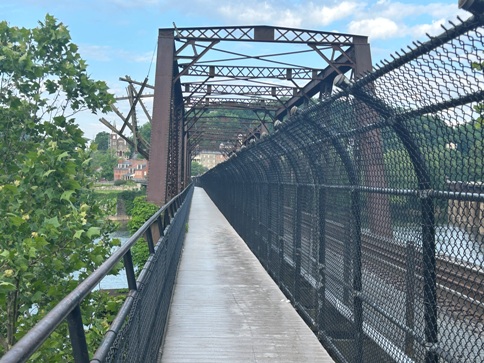
WillhiteWeb.com
You could spend a lot of time exploring Harpers Ferry but as a thru-hiker, sometimes you want to just keep making the miles. As I passed through, I already knew I would just return someday with a vehicle and take my time as a tourist. The pictures below are a few of the sites the Appalachian Trail passes by as it travels through Harpers Ferry.
Harpers Ferry National Historic Park
Appalachian Trail Sights


























In 1775, town founder Robert Harper chose this hillside for his home, completed in 1782. The Harper House is the oldest surviving structure in Harpers Ferry and has undergone many transformations from tavern, residence, rental property, abandoned ruin to restored exhibit.
Harper House: The Mansion on the Hill
These weathered ruins are all that remain of St. Johns Episcopal Church, one of Harpers Ferry’s five earliest churches. Built in 1852, it served as a hospital and barracks during the Civil War and suffered considerable damage. It was rebuilt after but abandoned in 1895 when a new one was built in the upper town.
St. Johns Episcopal Church
Brown and his 18 men captured and held the armory for 36 hours before U.S. Marines commanded by Robert E. Lee battered through the door, wounded and captured Brown, and ended the raid. Brown was hanged for murder, treason, and inciting a slave insurrection.
Fire Engine House
The John Brown Museum has a three-part film on John Browns life before, during and after his raid in Harpers Ferry. In the break between video segments, visitors can participate in interactive exhibits and learn more details on Browns life and actions.
John Brown Museum (1800-1859) Abolitionist
1810 drawing of Jefferson Rock, by Benjamin Latrobe, designer of the U.S. Capitol Building.
Around 1860, the U.S. armory superintendent ordered red sandstone supports placed under the rock because it was endangering the lives and properties of the villagers below.
In 1783, Thomas Jefferson described the view from Jefferson Rock during a visit to Harpers Ferry, saying the scene is with a voyage across the Atlantic.
Entering the park on the Appalachian Trail
Shenandoah River
Crossing the Shenandoah River
Shenandoah River
Crossing the Shenandoah River
Appalachian Trail dropping down into the town.
Trail passing a church
Harpers Ferry
Harpers Ferry
Harpers Ferry is a popular half way point that many start or stop on the trail during a flip flop hike. With railroad access from Washington DC, it makes for an easy access point.
Crossing of the Potomac River out of Harpers Ferry
Bollman Bridge crossing
Harpers Ferry railroad tunnel
Trail drops below Harpers Ferry railroad tunnel railroad lines.
Crossing of the Potomac River looking back at Harpers Ferry.
Old Shenandoah River bridge crossing.


























